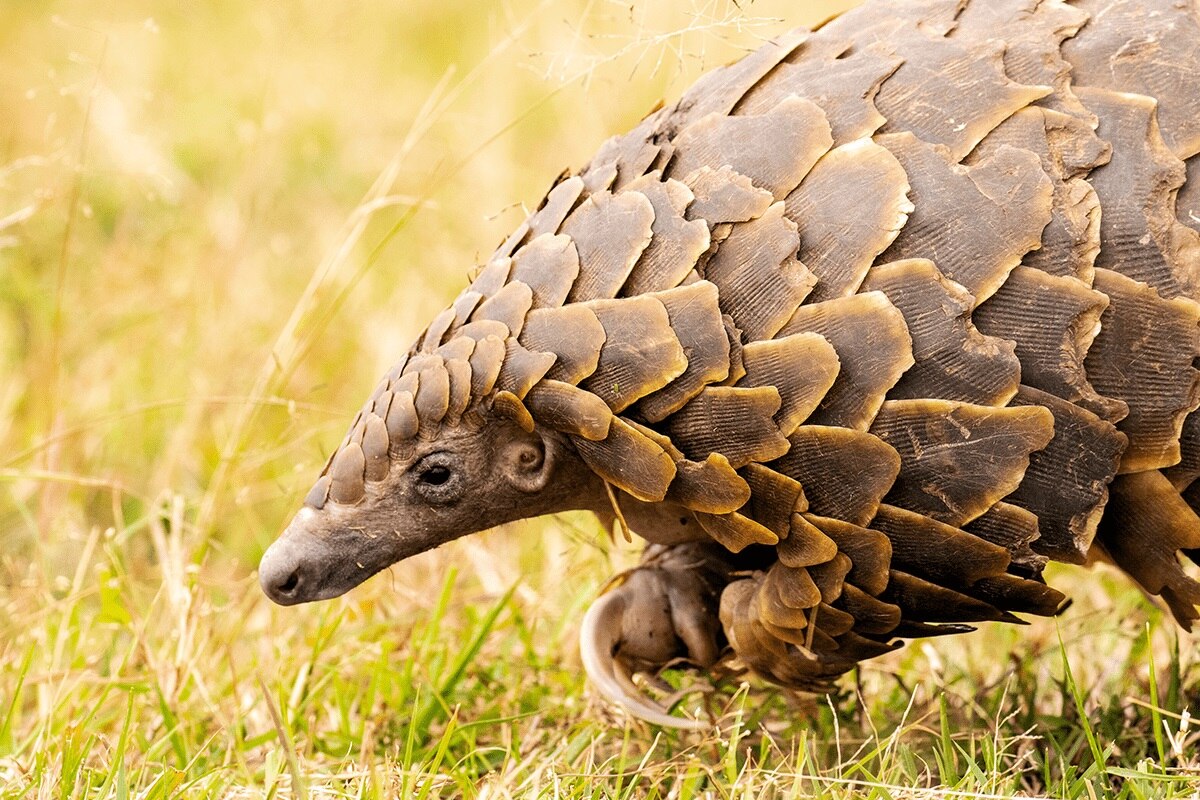
Endangered animals are a crucial part of our planet's biodiversity, and their survival is a matter of great concern. From the majestic tigers to the gentle sea turtles, these creatures face various threats that jeopardize their existence. Understanding the plight of endangered animals is essential for raising awareness and inspiring conservation efforts. In this article, we will explore 24 intriguing facts about endangered animals. By delving into their unique characteristics, habitats, and the challenges they confront, we aim to shed light on the importance of protecting these vulnerable species. Through this exploration, we hope to ignite a sense of empathy and stewardship for the remarkable creatures with whom we share this planet. Join us as we embark on a journey to discover fascinating insights about these endangered animals and learn how each one plays a vital role in maintaining the ecological balance of our world.
Key Takeaways:
- Tigers, pandas, and elephants are endangered due to habitat loss and poaching. Conservation efforts are crucial to protect these majestic animals and maintain ecological balance.
- Endangered animals like the red panda and hawksbill sea turtle face threats from habitat destruction and illegal trade. It’s important to raise awareness and take action to save these unique species.
Tigers are the largest cat species in the world.
Tigers are renowned for their majestic appearance and incredible strength. These magnificent creatures are easily recognizable by their orange coat with black stripes, and they are capable of taking down prey much larger than themselves. Unfortunately, due to habitat loss and poaching, tigers are classified as an endangered species, with only an estimated 3,900 individuals remaining in the wild.
The giant panda's diet is 99% bamboo.
Giant pandas are beloved around the world for their adorable appearance and unique diet. These gentle giants spend a significant portion of their day munching on bamboo, consuming up to 26-84 pounds of it daily. However, their reliance on bamboo leaves them vulnerable to habitat loss and climate change, leading to their endangered status.
The African elephant is the largest land animal on Earth.
African elephants are truly remarkable creatures, known for their intelligence, empathy, and close-knit family bonds. These gentle giants play a crucial role in maintaining the ecological balance of their habitats. However, they face a severe threat from poaching and habitat destruction, resulting in a rapid decline in their population.
The blue whale is the largest animal on the planet.
The blue whale, the largest animal to have ever existed on Earth, is a truly awe-inspiring creature. With a heart the size of a small car and a tongue that can weigh as much as an elephant, these magnificent marine mammals are unfortunately classified as endangered due to the detrimental impacts of commercial whaling and maritime traffic.
The Amur leopard is one of the most endangered big cats in the world.
The Amur leopard, native to the Russian Far East and northeastern China, is one of the rarest big cats on the planet. With an estimated 84 individuals remaining in the wild, this stunning leopard is critically endangered due to habitat loss, poaching, and human-wildlife conflict.
The black rhinoceros is a critically endangered species.
Renowned for its distinctive hooked lip and solitary nature, the black rhinoceros is critically endangered, with only around 5,000 individuals left in the wild. Despite conservation efforts, these magnificent creatures continue to face threats from poaching for their horns and habitat loss.
The leatherback sea turtle is the largest turtle species in the world.
The leatherback sea turtle, with its unique leathery shell, holds the title of the largest turtle species on the planet. These remarkable creatures embark on incredible migrations across oceans, but they are faced with numerous threats, including plastic pollution, bycatch in fishing gear, and the destruction of nesting beaches.
The Javan rhinoceros is the rarest large mammal on Earth.
The Javan rhinoceros, with its distinctive skin folds and solitary nature, is the rarest large mammal in the world, with only an estimated 72 individuals remaining in a single population in Indonesia. Habitat loss and poaching have driven this species to the brink of extinction, making conservation efforts crucial for its survival.
The snow leopard's habitat spans 12 countries in Central and South Asia.
The elusive snow leopard, known for its thick fur and incredible agility, inhabits the rugged and remote mountains of Central and South Asia. However, these majestic cats face significant threats from poaching, retaliatory killings by herders, and habitat degradation due to climate change, pushing them towards endangerment.
The pangolin is the most trafficked mammal in the world.
Pangolins, with their unique scaly armor, are the most trafficked mammals globally, sought after for their scales and meat. This illegal trade has led to a drastic decline in pangolin populations, making them one of the most endangered mammals on the planet.
The Sumatran orangutan is critically endangered.
The Sumatran orangutan, known for its distinctive shaggy red hair and remarkable intelligence, is critically endangered due to habitat loss caused by deforestation and the expansion of palm oil plantations. With only an estimated 14,000 individuals remaining, urgent conservation actions are essential to ensure their survival.
The vaquita is the world's most endangered marine mammal.
The vaquita, a small porpoise native to the Gulf of California, is on the brink of extinction, with only around 10 individuals remaining. Illegal fishing practices, particularly the use of gillnets, have driven the vaquita to the edge of survival, making immediate intervention vital for its preservation.
The mountain gorilla population has shown a positive trend in recent years.
The mountain gorilla, known for its gentle nature and impressive strength, has experienced a heartening increase in population, thanks to dedicated conservation efforts and community engagement. With the population surpassing 1,000 individuals, the mountain gorilla's status has shifted from critically endangered to endangered, marking a significant conservation success.
The red panda is often referred to as the "firefox."
The red panda, with its vibrant red fur and bushy tail, is often affectionately referred to as the "firefox." Despite its popularity, this charming species is classified as endangered due to habitat loss and poaching, highlighting the need for concerted conservation actions to safeguard its future.
The hawksbill sea turtle is a vital species for maintaining healthy coral reefs.
Hawksbill sea turtles play a crucial role in maintaining the health of coral reefs, as they feed on sponges, which can otherwise outcompete reef-building corals. However, these magnificent turtles face threats from habitat destruction, accidental capture in fishing gear, and the illegal wildlife trade, leading to their endangered status.
The saola is often referred to as the "Asian unicorn."
The saola, a unique and elusive bovine species with long, straight horns, is often referred to as the "Asian unicorn" due to its rarity and mystical aura. With an estimated population of only a few hundred individuals, the saola is critically endangered, primarily due to hunting and habitat loss.
The humphead wrasse is a prized target in the live reef fish trade.
The humphead wrasse, with its striking appearance and large size, is highly sought after in the live reef fish trade, leading to a significant decline in its population. Overfishing and habitat degradation pose grave threats to this iconic reef fish, resulting in its vulnerable status.
The Philippine eagle is one of the world's largest and most powerful eagles.
The Philippine eagle, known for its majestic appearance and impressive wingspan, is one of the largest and most powerful eagles globally. However, this magnificent bird is critically endangered due to deforestation, hunting, and human disturbance, necessitating urgent conservation measures to protect its dwindling population.
The western lowland gorilla is the most numerous and widespread of all gorilla subspecies.
The western lowland gorilla, characterized by its gentle demeanor and strong social bonds, is the most numerous and widespread of all gorilla subspecies. Despite this, the western lowland gorilla faces severe threats from habitat loss, poaching, and diseases, leading to a concerning decline in its population.
The Bornean elephant is the smallest of the Asian elephants.
The Bornean elephant, with its endearing appearance and smaller size compared to other Asian elephant subspecies, is native to the island of Borneo. However, habitat loss and fragmentation, as well as human-wildlife conflict, pose significant challenges to the survival of these remarkable elephants.
The red-crowned crane is considered a symbol of longevity and good fortune in Japanese culture.
The red-crowned crane, with its elegant appearance and graceful movements, holds a special place in Japanese culture, where it is revered as a symbol of longevity and good fortune. Despite its cultural significance, the red-crowned crane is classified as endangered, primarily due to habitat loss and degradation.
The Iberian lynx is the world's most endangered feline species.
The Iberian lynx, native to the Iberian Peninsula, is the most endangered feline species globally, with a population that teetered on the brink of extinction. Intensive conservation efforts have led to a slight increase in its population, offering hope for the survival of this iconic wild cat.
The North Atlantic right whale is one of the rarest large whale species.
The North Atlantic right whale, with its massive size and distinctive callosities on its head, is one of the rarest large whale species on the planet. Despite conservation measures, these magnificent marine mammals face threats from entanglement in fishing gear and vessel strikes, underscoring the urgent need for continued protection.
The Amur tiger, also known as the Siberian tiger, is the largest tiger subspecies.
The Amur tiger, renowned for its thick fur and impressive size, is the largest tiger subspecies, adapted to the harsh climate of the Russian Far East. While conservation efforts have led to a slight increase in its population, the Amur tiger remains endangered due to poaching and habitat loss, emphasizing the importance of ongoing conservation initiatives.
The [24 Best Facts About Endangered Animals] shed light on the remarkable diversity of endangered species facing critical challenges in their natural habitats. These captivating creatures, from the majestic tigers to the elusive saolas, are integral to the ecological balance of their respective ecosystems. As the threats of habitat loss, poaching, and human-wildlife conflict loom large, concerted conservation efforts and public awareness are vital to safeguarding the future of these endangered animals. By understanding and appreciating the significance of these species, we can collectively work towards ensuring their continued existence on our planet.
Conclusion
In conclusion, understanding the plight of endangered animals is crucial for their survival. By raising awareness about the challenges these species face, we can work towards implementing effective conservation strategies. It is imperative to prioritize the protection of their natural habitats, combat illegal wildlife trade, and promote sustainable practices. Through collaborative efforts, we can strive to reverse the alarming trend of species extinction and ensure a harmonious coexistence between humans and wildlife.
FAQs
Why are endangered animals important?Endangered animals play a vital role in maintaining ecosystem balance. Their presence contributes to biodiversity and supports the overall health of the environment. Additionally, many endangered species have unique genetic traits that hold potential value for scientific research and future advancements.
How can individuals contribute to the conservation of endangered animals?Individuals can make a difference by supporting reputable conservation organizations, advocating for wildlife protection laws, reducing their ecological footprint, and educating others about the importance of preserving endangered species and their habitats. Every small effort contributes to the collective impact of conservation initiatives.
Endangered animals face numerous challenges, but their stories are far from over. Curious minds can leap into the world of leopards, exploring their captivating characteristics and behaviors. Wildlife conservation efforts are crucial for protecting vulnerable species and their habitats. Discover the fascinating realm of Oahu tree snails, a unique and often overlooked part of Hawaii's biodiversity. By learning more about these incredible creatures, we can better appreciate the urgent need to protect them and ensure their survival for generations to come.
Was this page helpful?
Our commitment to delivering trustworthy and engaging content is at the heart of what we do. Each fact on our site is contributed by real users like you, bringing a wealth of diverse insights and information. To ensure the highest standards of accuracy and reliability, our dedicated editors meticulously review each submission. This process guarantees that the facts we share are not only fascinating but also credible. Trust in our commitment to quality and authenticity as you explore and learn with us.


